Photographs and caption material by Robert Freidus, formatting by George P. Landow. [You may use these images without prior permission for any scholarly or educational purpose as long as you (1) credit the photographer and (2) link your document to this URL in a web document or cite the Victorian Web in a print one. Click on the images to enlarge them.]
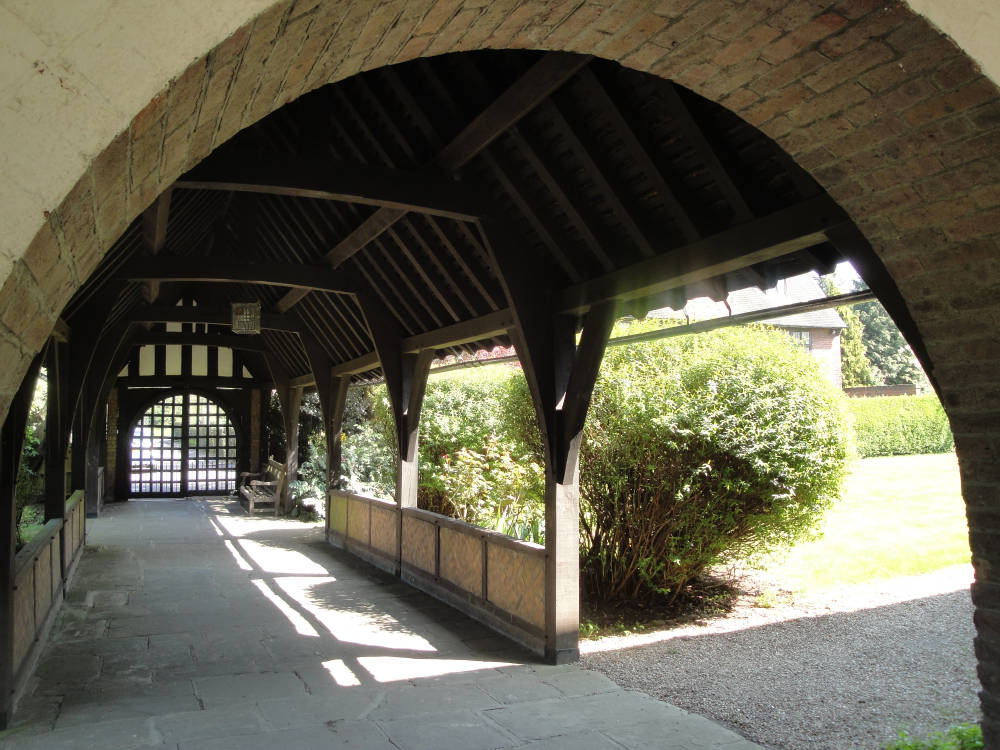
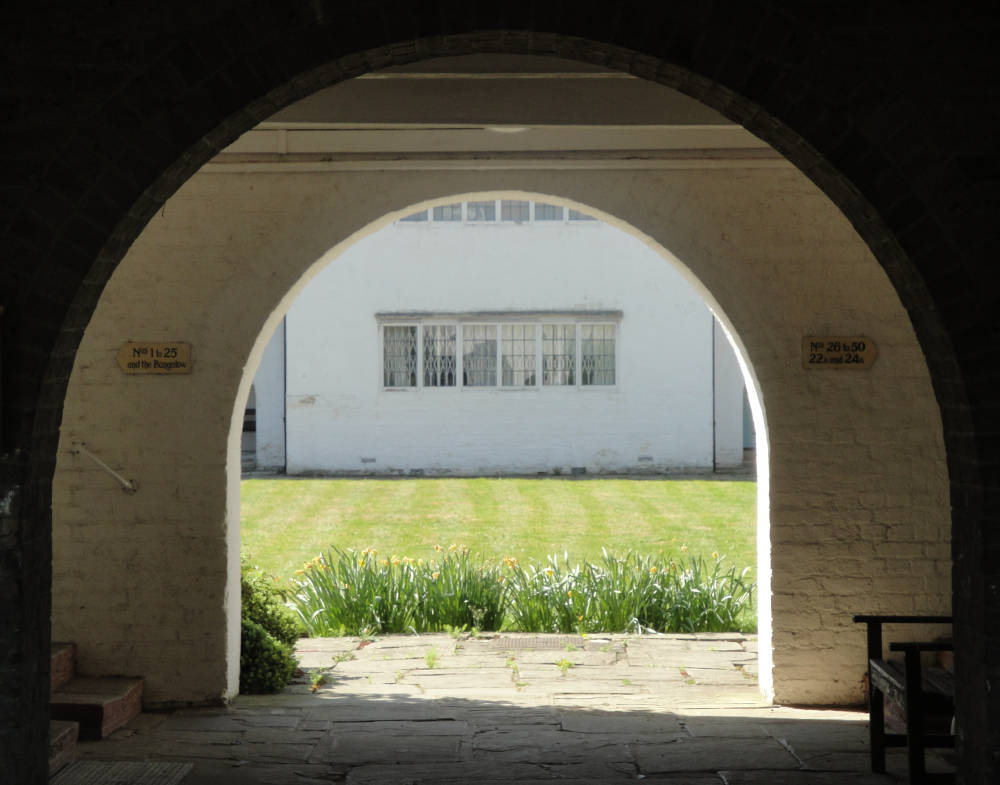
Waterlow Court, designed by Mackay Hugh Baillie Scott in 1904 and completed in 1909, in Heath Close, Hampstead Garden Suburb, London NW11. One of the architect's own "favourite schemes" (see Haigh 59), Waterlow Court was given its high Grade II* listed building status in 1965, and has been widely praised, not least for its attention to detail. Above can be seen (left) the covered walkway with its timbered framing, and (right) a view through one of the round arches which make up the arcade, like a cloister, around the outside of the individual units on the ground floor.

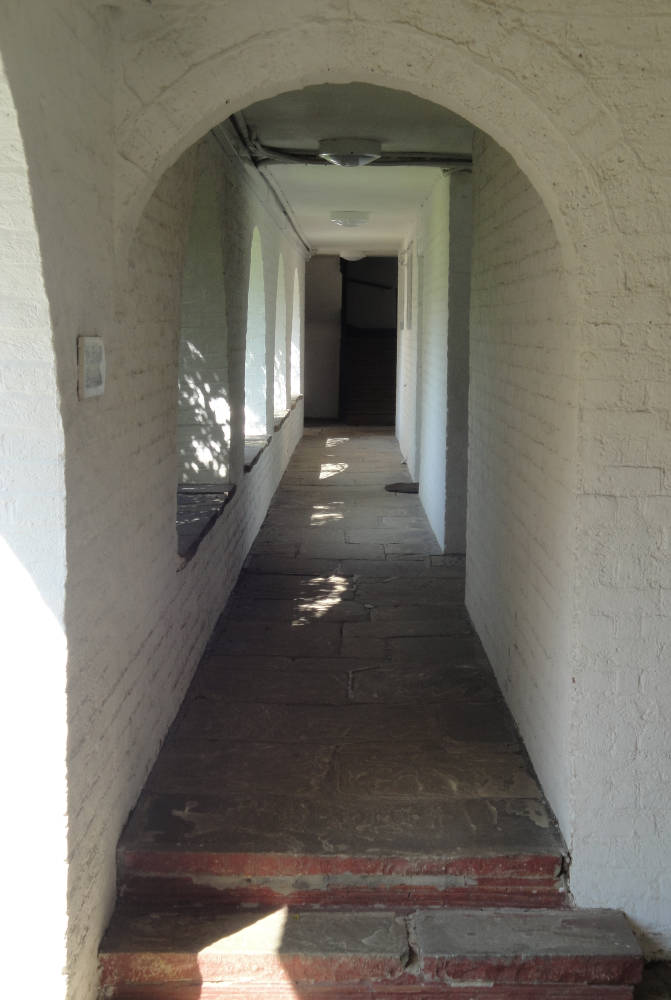

Every vista in this connecting but open hallway has some light, and a sense of expansiveness and depth.
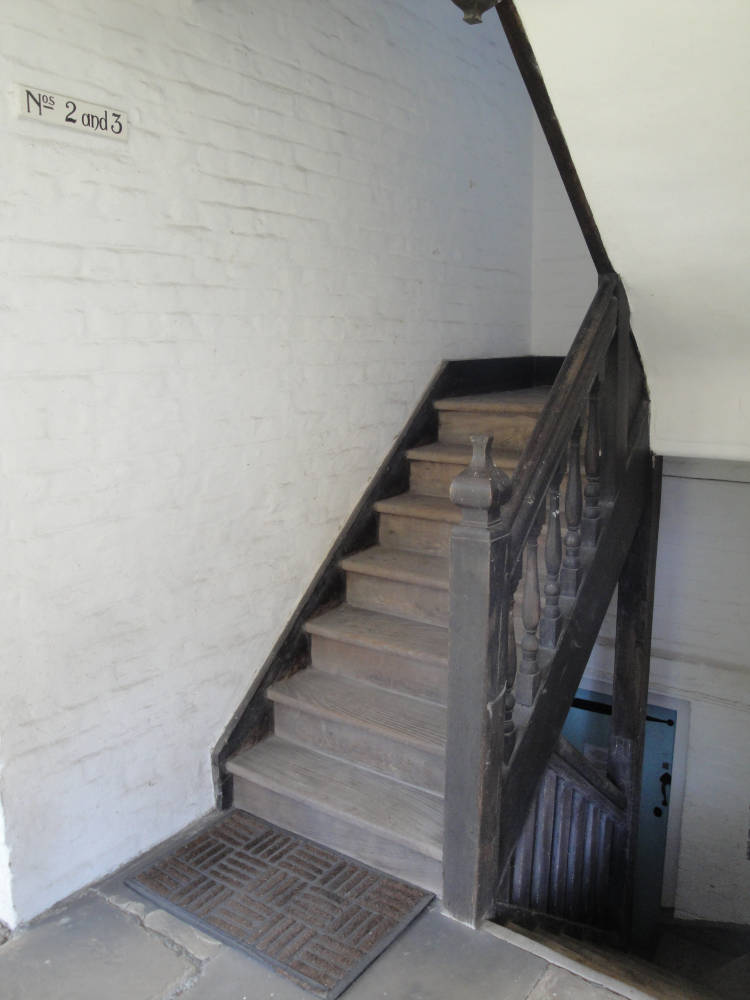
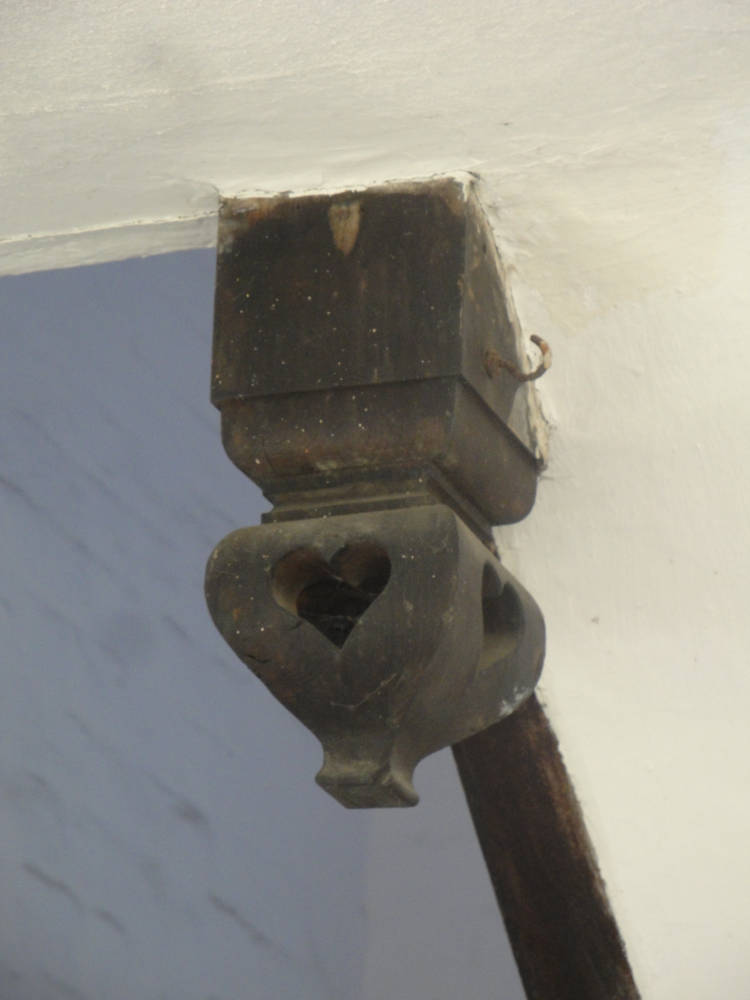
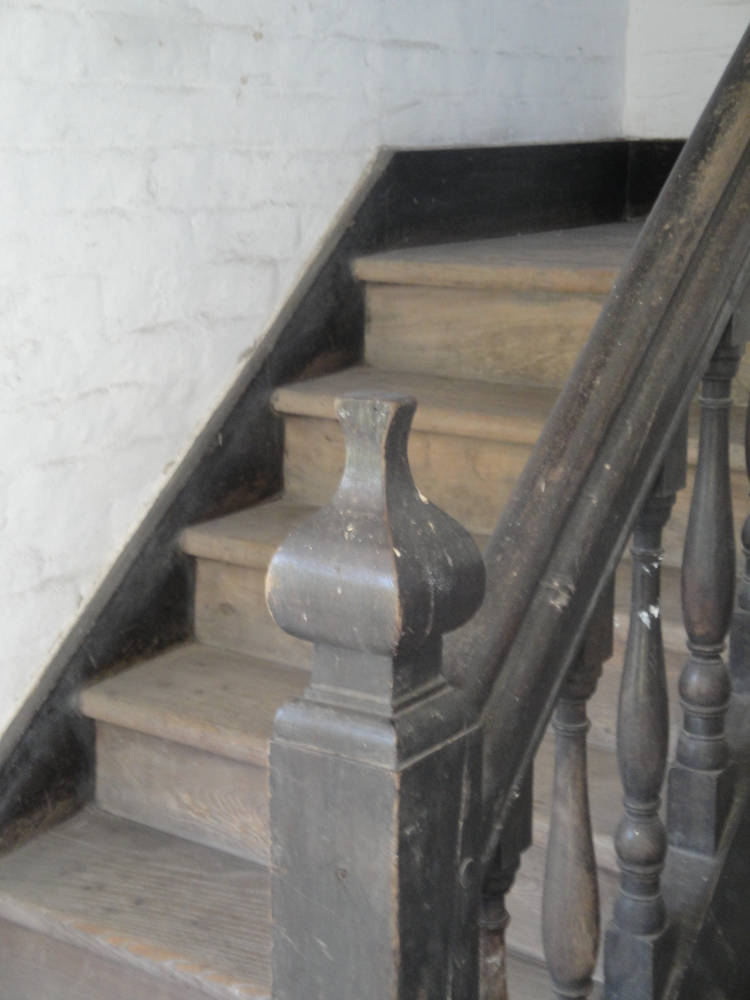
The staircases leading up the next floor have "18th century style balusters and Jacobean style handrail and newel posts with turned finials" (listing text). As another example of the architect's attention to detail, the listing text notes: "The original fittings, door and window furniture was made by J. Pyghtle White of Bedford for Ambrose Heal of London."
Bridget Cherry and Nikolaus Pevsner find the development "particularly pleasing" (42), and Diane Haigh's general comment on it makes a fitting conclusion. She feels that Waterlow Court "contains many of [Scott Baillie's] aspirations in architecture, making a clear statement of an alternative way of living in cities — in small individual units combined into a building of breadth and scale, pervaded by planting and space" (59).
Related Material
- Exterior views
- Lych gate and Tudor Revival timber framing
- Another view of a wall facing the courtyard
- Garden Suburbs: Architecture, Landscape and Modernity 1880-1940
Bibliogaphy
Cherry, Bridget and Nikolaus Pevsner. London 4: North. New Haven and London: Yale University Press, 2002.
Haigh, Diane. Baillie Scott: The Artistic House. London: Academy Editions, 1995.
Waterlow Court. Historic England. Web. 4 May 2017.
Last modified 4 May 2017